Matera, from Italy’s national disgrace to European Cultural Capital
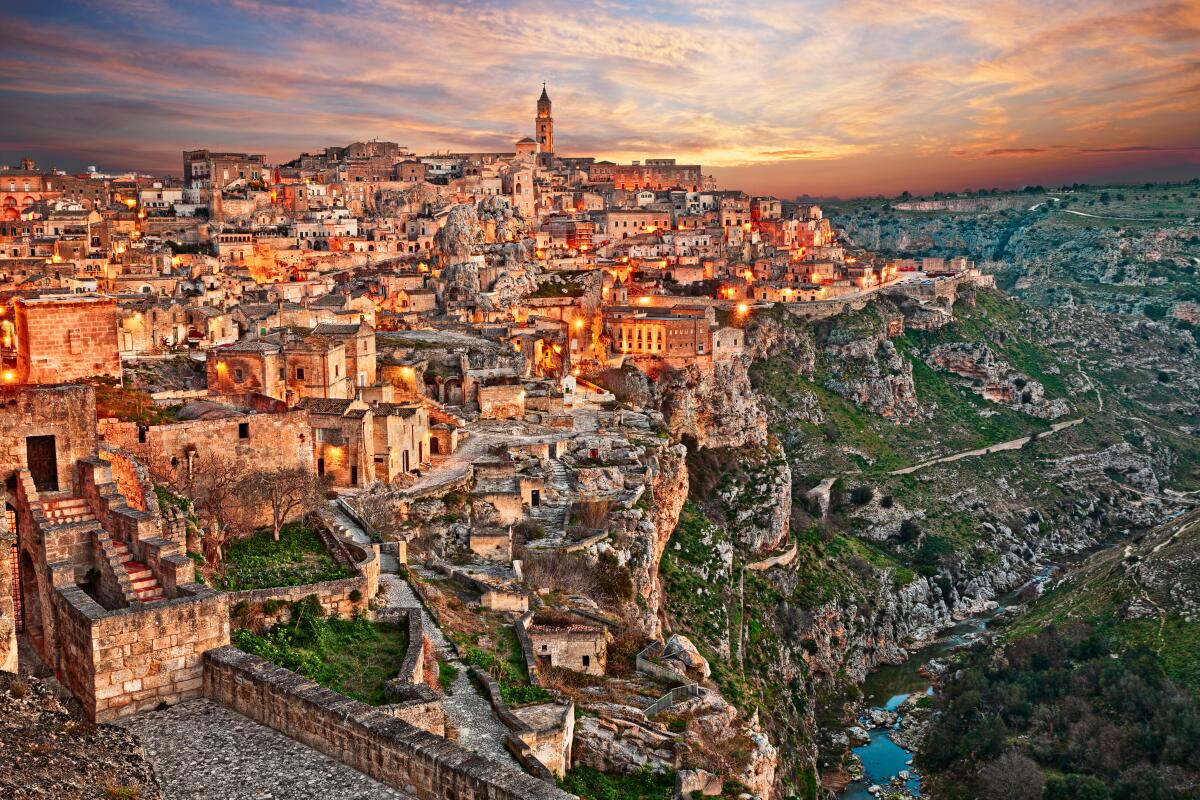
- Share via
Matera, Italy — The cave dwellings are piled atop one another like giant rocks spilled from the sky. The sandstone landscape stretches across a hill, one road and narrow alleys slicing here and there through the landscape.
We think of Rome, at 3,000 years old, as ancient, but it looks newly incorporated compared with Matera, which is 5,000 years older.
This town of 60,000, almost in the heel of Italy’s boot, wears its age well in movies. It has appeared in such films as “The Passion of the Christ” (2004), “Ben-Hur” (2016) and “Mary Magdalene” (2018).
But in real life, it has only recently come into its own.
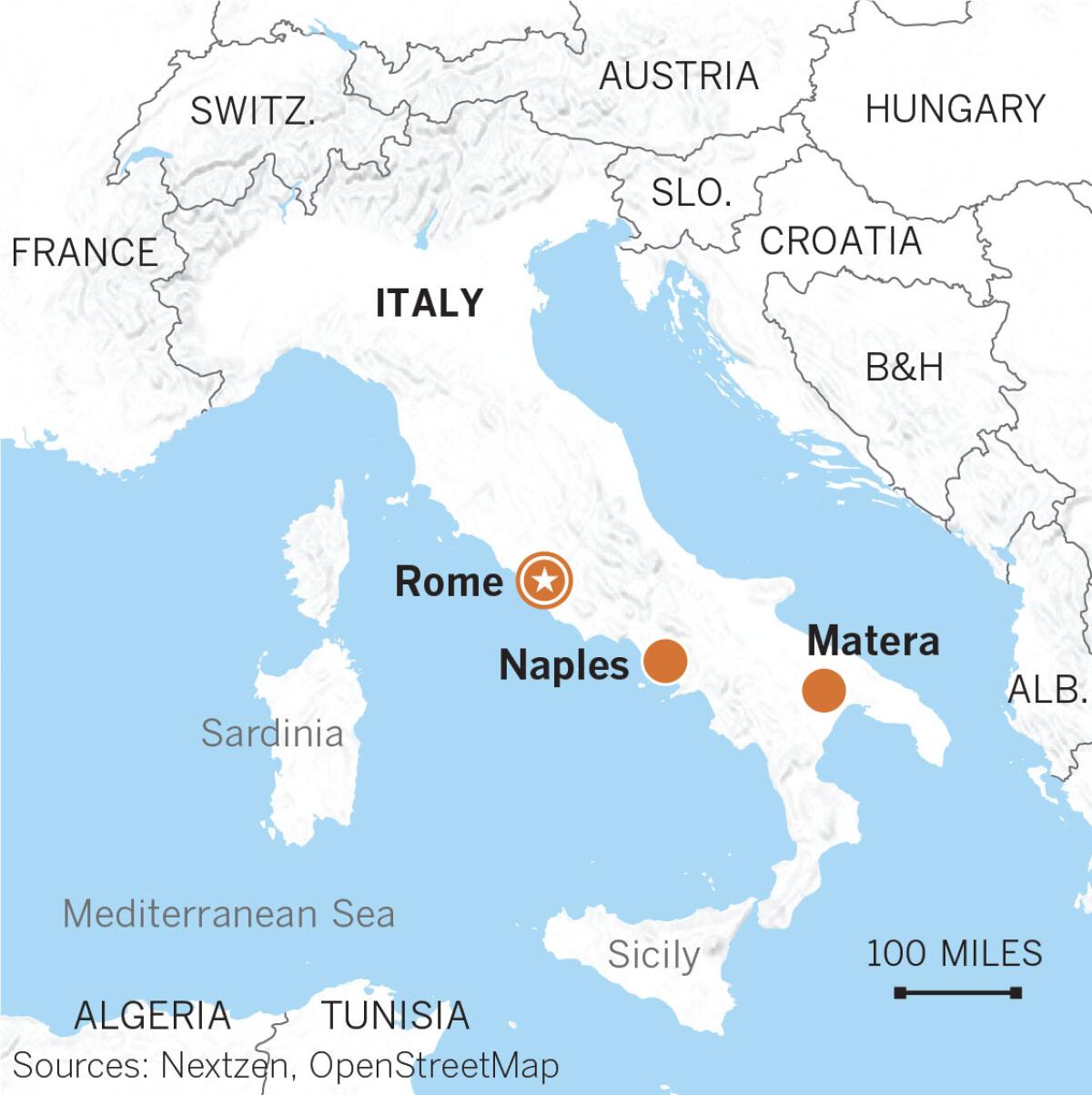
Matera, in southern Italy’s Basilicata region, was designated a UNESCO World Heritage Site in 1993; UNESCO described it as the “most outstanding, intact example of a troglodyte settlement in the Mediterranean region.” It also has been designated a European Cultural Capital for 2019 and will host cultural events expected to draw thousands of visitors.
These are lofty accomplishments considering that, not long ago, Italy wanted to use its boot to kick Matera off the map.
When Marina Pacucci, my girlfriend, and I heard that Matera had been selected as a cultural capital, we wanted to return to see more of this city of the Sassi — literally, “the stones,” describing the cave dwellings — that today house shops, cafes, restaurants and hotels.
Marina and I had first visited just before Christmas 2017. Both times, we took a seven-hour bus ride from my home in Rome (it’s less expensive but takes longer than the train). From our windows, we could see the mosaic of wheat fields, olive groves and grapevines that populate this largely agricultural area.
Humble beginnings

Being in the Sassi, which dates to the Paleolithic period more than 2.5 million years ago, is a bit like strolling through a prehistoric theme park.
Once early humans began using tools, they began living in the caves, fashioning rudimentary dwellings from stone. The area has been continuously inhabited for the last 8,000 years.
On our first trip we stopped in the middle of the Sassi at the Vico Solitario museum, which depicts a sample cave dwelling. At about 540 square feet (about a quarter of the size of today’s average new home in the U.S.), it housed 12 people. A bed sat by a wall under a small loft, and an iron pot used as a toilet was under the bed. There was no running water, no drainage and, of course, no electricity.
The squalor built upon itself over time until it became a national embarrassment.
By the end of World War II, malaria was rampant, and infant mortality surged to 40%. In 1948, Justice Minister Palmiro Togliatti called the Sassi a “national shame.”
More recently, Matera Mayor Raffaello de Ruggieri, 83, a native of the city, described it to me as “the model of the misery” of southern Italy, a historically poor region. “Poverty,” he said. “Terrible poverty.”
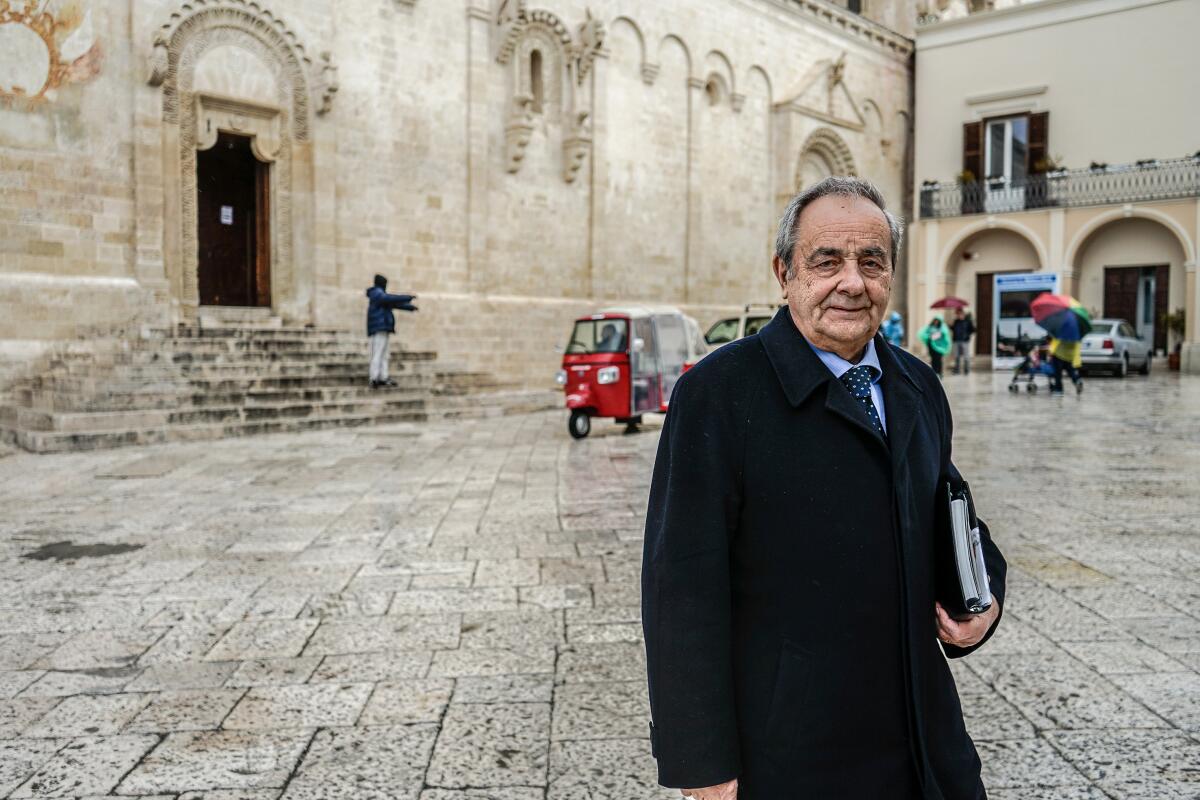
By 1952 the Italian government had built a neighborhood on the western outskirts of town, forcing the Sassi inhabitants to move from their dwellings. They pleaded to return, and by 1986, those who agreed to restore the Sassi with their own money were allowed to do so.
Today, about 400,000 tourists visit Matera each year, drawn by the history, the views and the novelty.
“The greatness of this city is that [it] survived all the way from the Paleolithic times,” said Vincenzo Altieri, who owns La Dolce Vita Bed and Breakfast, where we stayed on our first visit.
For me, this ancient dwelling was, if not the sweet life, a comfortable and unusual way to inhabit the city. Our room was like a well-appointed cave, with modern conveniences that included air conditioning and Wi-Fi. (Marina felt a bit claustrophobic and asked to stay elsewhere on our next trip.)
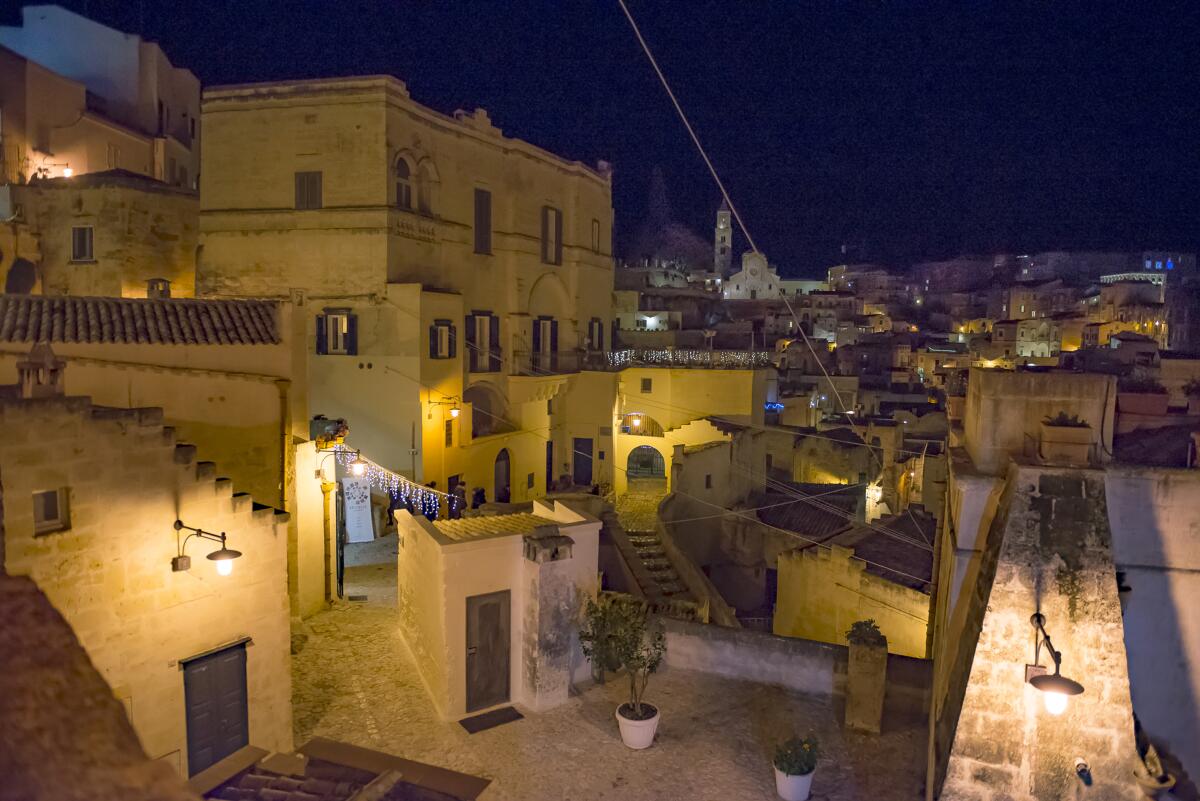
To get the lay of the land, it’s helpful to know the geography. The Sassi are divided into two areas, Sasso Caveoso to the south and Sasso Barisano to the northwest. To the west is the town where the Sassi’s masses were evacuated. To the east is the Parco della Murgia Materana, where a huge gorge, bisected by a river, is laced with hiking paths. Every time we climbed the steps behind La Dolce Vita, we gazed at this panorama, transfixed.
As you plan your visit, know that Matera is hilly but hikeable, and it’s built for people, not cars. (It’s impossible, in some places, for two autos to pass without side-swiping.)
We spent our time exploring on foot. Via del Corso, the town’s main road, is a walking mall lined with shops, restaurants and hip cafes. Walking north on Madonna Delle Virtù gave us great views of the Sassi to our left and the ravine to our right.
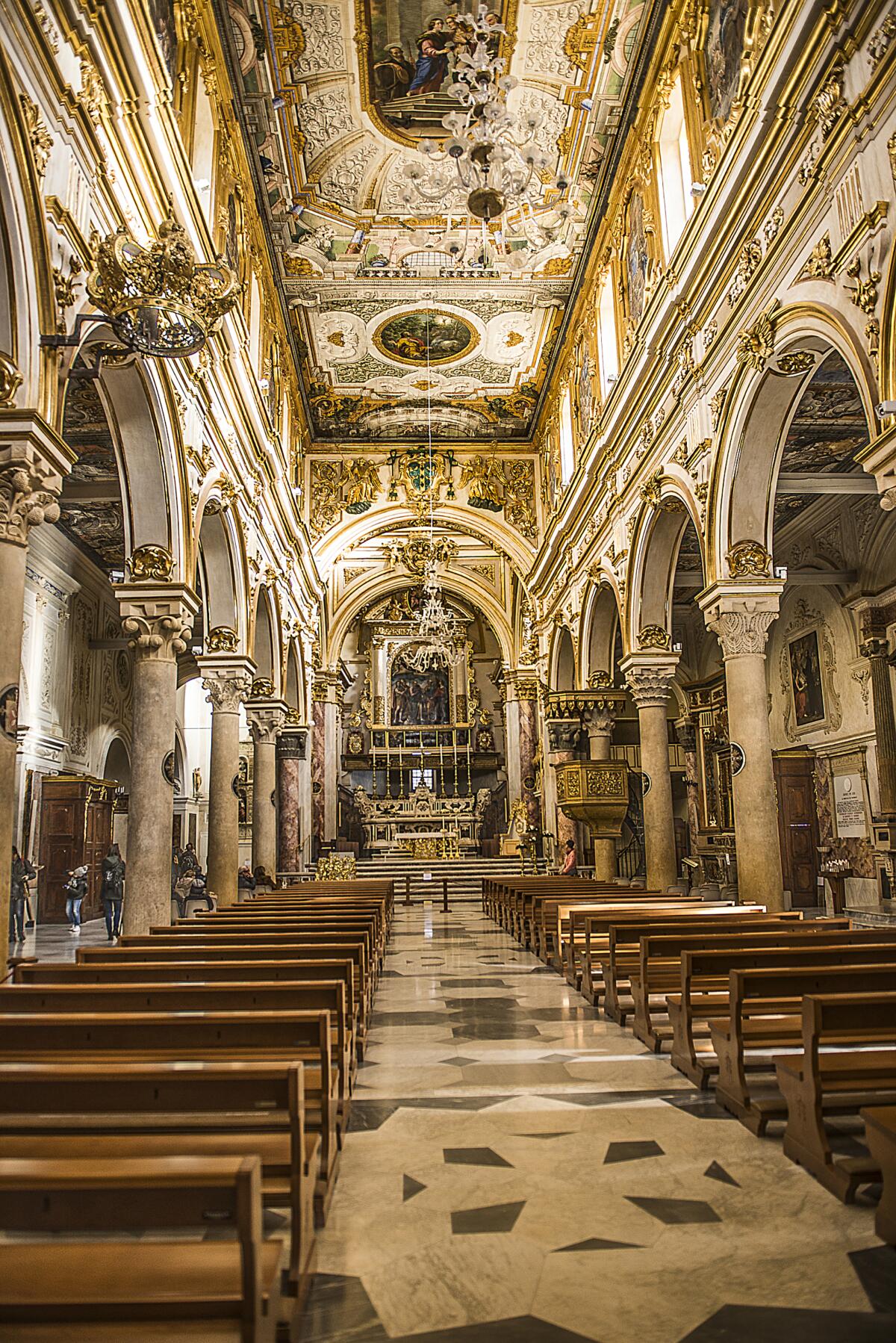
We found a tiny staircase that led us to the Piazza Duomo, the 12th century cathedral that’s the centerpiece of the town’s 170 churches. (“We have more churches than Rome,” Altieri joked.) The Duomo’s 170-foot tower offers an excellent view of the gorge.
Some of the churches charge admission, but we found it a worthwhile investment. For 6 euros — a little less than $7 — we were allowed into three churches. The 8th century Santa Lucia alle Malve has beautiful well-preserved frescoes. Some of its walls are blackened with age, and two white stone pillars, illuminated from below, make it feel more haunting than religious.
The 12th century San Pietro Barisano is one of the more unusual sites. Plundering in the 1960s and ’70s stripped the altar of its treasures, leaving it empty and the surrounding statues headless. Underground, narrow passageways have 4-foot niches carved in the walls. Corpses were placed there in wet weather. The beauty of San Giovanni Battista is its simplicity. Its frescoes were scrubbed in the 1920s, and it has but one stained-glass window over its altar.
Delicious dining
In southern Italy, the cuisine is known as cucina povera, or poor man’s cooking, but we found it rich and hearty. The sweet and crunchy Senise peppers, from the town of the same name about 60 miles south of Matera, often are pounded into powder and used in cheeses, meats and soups.
Ristorante del Caveoso quickly became our favorite restaurant. A spectacular local cheese plate was followed by tortellini filled with pork and caciocavallo cheese, which is salty and curdlike. The dish was topped with more caciocavallo and sauce, which I mopped up with Matera’s heavy-crusted bread. I chased it with a rich Primitivo wine.
On our last trip, we dined at ‘900 Restaurant, which describes itself as typical of Matera (it’s in a reconstructed Sasso) but “offering a taste of the 20th century.” I devoured one of the specialties: brasato di capocollo all’aglianico, beef in local Aglianico wine.
After dinner, we walked back to our room at Le Dimore Dell’Acqua B&B (acceding to Marina’s wishes for a more modern lodging on this trip). The March moon shone brightly, illuminating a city that is emerging from the shadows of its past.
Cultural capital events
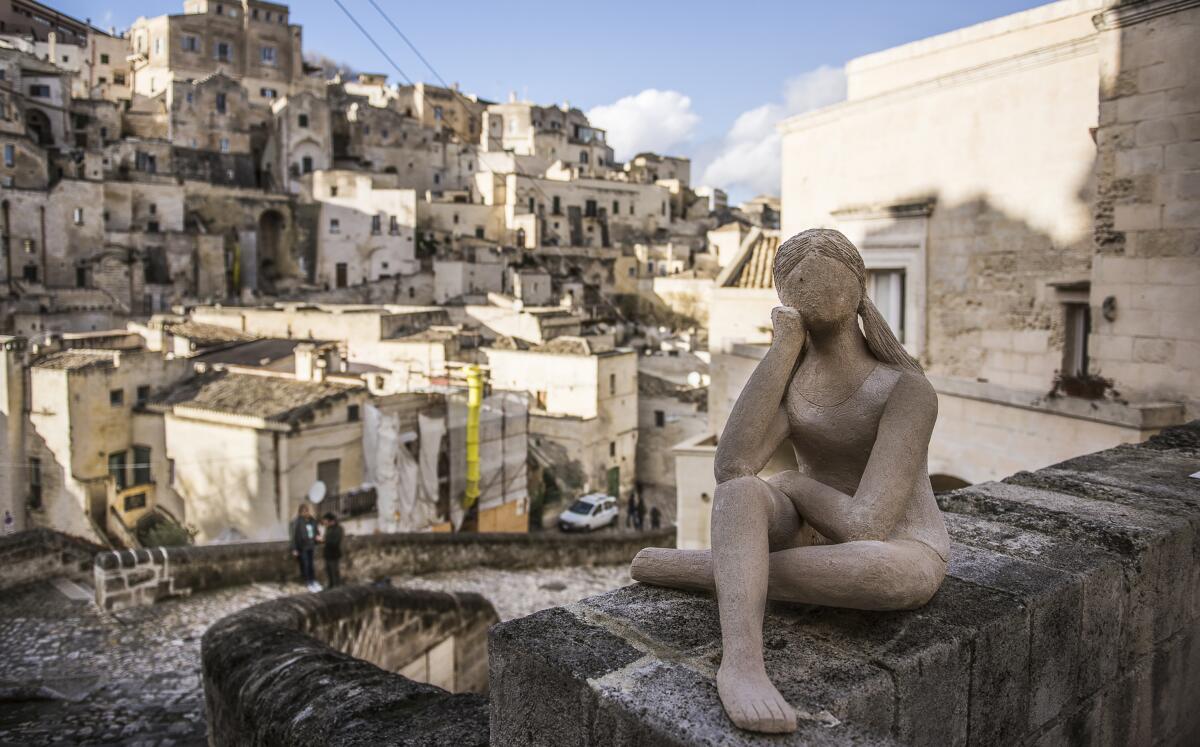
It’s not about tourism, Paolo Verri, general director of Matera 2019 European Capital of Culture, said of Matera’s cultural capital status. “It’s more how to increase the quality of culture, how to involve citizens to make more of a cultural base in the city,” he said. “And also a long-term strategy to let us maintain Matera on the map.”
Among events this year in Matera:
The Renaissance as Seen From the South. A large art exhibit featuring the top masterpieces from southern Italy. They’ll include one work by Raphael, commissioned by the King of Naples, as well as works by Caravaggio. The collection totals 180 pieces from Italian and European museums and is as diverse as portraits, sculptures and navigational charts.
Inhabiting the Opera. The opera “Cavalleria Rusticana,” by Pietro Mascagni, will be performed Aug. 2-11 in Sasso Caveoso.
Meteradio. The Festival of Rai Radio 3. Live concerts, theater performances, dances and talks about radio. Sept. 13-15.
The Poetry of Primes: From Pitagora to Algorithms. A technological exhibition linking Pythagoras, the Greek philosopher and inventor of mathematics, to Dutch artist M.C. Escher. Metaponto archaeological museum. Through Oct. 31.
People can attend events all year with the Passport, a combo ticket available to locals for 12 euros (about $13.50) and to outsiders for 19 euros (about $23).
Info: Matera 2019, bit.ly/Matera2019events
If you go
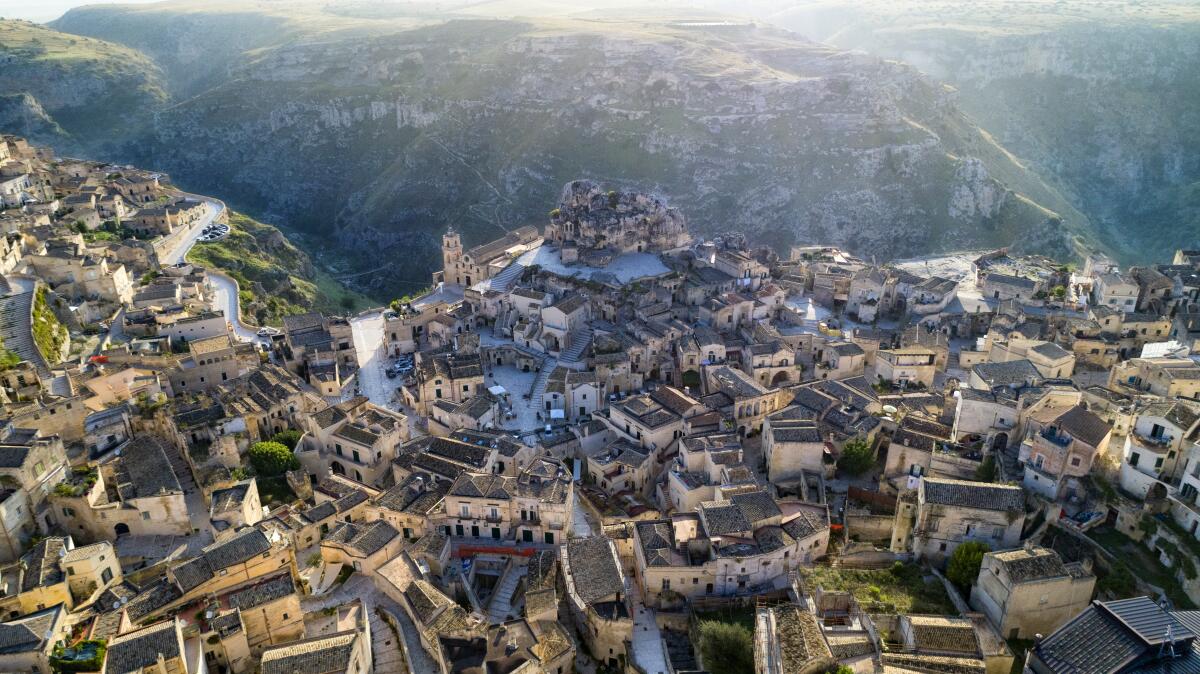
THE BEST WAY TO MATERA, ITALY
From LAX, Alitalia offers nonstop service to Rome, and Delta, American, United, British, KLM, Air France, Lufthansa, Iberia and Swiss offer connecting service (change of planes). Restricted round-trip airfare from $1,031, including taxes and fees. Alitalia, Air France and Delta offer connecting service to Bari, about 50 miles from Matera. Restricted round-trip airfare from $1,295, including taxes and fees.
Flixbus from Rome’s Anagnina station to Matera start at $20 one way. Bus from Bari airport to Matera $3 one way. High-speed train from Rome to Ferrandina, $70, four hours (cheaper trains take up to six hours). Then bus to Matera $2.60, 35 minutes (some buses take an hour).
TELEPHONES
To call the numbers below from the United States, dial 011 (the international calling code), 39 (the country code for Italy) and the local number.
WHERE TO STAY
La Dolce Vita B&B, 51 Via Rione Malve, Matera; ladolcevitamatera.it. In the heart of Sasso Caveoso. Four rooms for $100 a night and an apartment for $125, including breakfast. Most are built into caves with modern conveniences. Knowledgeable owner Vincenzo Altieri speaks perfect English.
Le Dimore dell’Acqua B&B, 24 Via Emanuele Duni, Matera; ledimoredellacqua.it. Rooms $85-$140 low season (Jan. 7-March 28, Oct. 10-Dec. 27), $110-$190 high season (March 29-Sept. 30, Dec. 27-Jan. 6). In an 1870 building on the edge of the Sassi near Via Lucana. Rooms are airy and modern.
Aquatio Cave Luxury Hotel & Spa, 12 Via Conche, Matera; aquatiohotel.com. $260 high season, $250 low season. Highly rated hotel has luxury cave rooms, indoor pool, spa and romantic restaurant.
WHERE TO EAT
Ristorante del Caveoso, 21 Via Bruno Buozzi, Matera; ristorantedelcaveoso.it. Specializing in Basilicata dishes such as cavatelli con peperoni cruschi (pasta with crushed peppers, cacioricotta cheese and fried bread crumbs) and a local cheese plate. Closed Wednesdays.
Soul Kitchen, 27 Via Casalnuovo, Matera; ristorantesoulkitchen.it. Elegant restaurant with outdoor seating and different twists on traditional local dishes such as saltimbocca in lemon and pistachio sauce. Closed Thursdays.
‘900 Restaurant, 31 Via Santo Stefano, Matera; 900restaurant.it. 7:30-11 p.m. On the edge of the Sassi away from the crowds. The recipes use Basilicata products such as beef roast in Aglianico wine sauce. Main courses start at $11. Closed Wednesdays.
TO LEARN MORE
Basilicata Turistica, 9 Via De Viti De Marco, Matera, 08-35-331-983, aptbasilicata.it
Matera 2019 European Capital of Culture, 39 Via Madonna delle Virtù, 08-35-256-384, bit.ly/Matera2019events
More to Read
Sign up for The Wild
We’ll help you find the best places to hike, bike and run, as well as the perfect silent spots for meditation and yoga.
You may occasionally receive promotional content from the Los Angeles Times.






